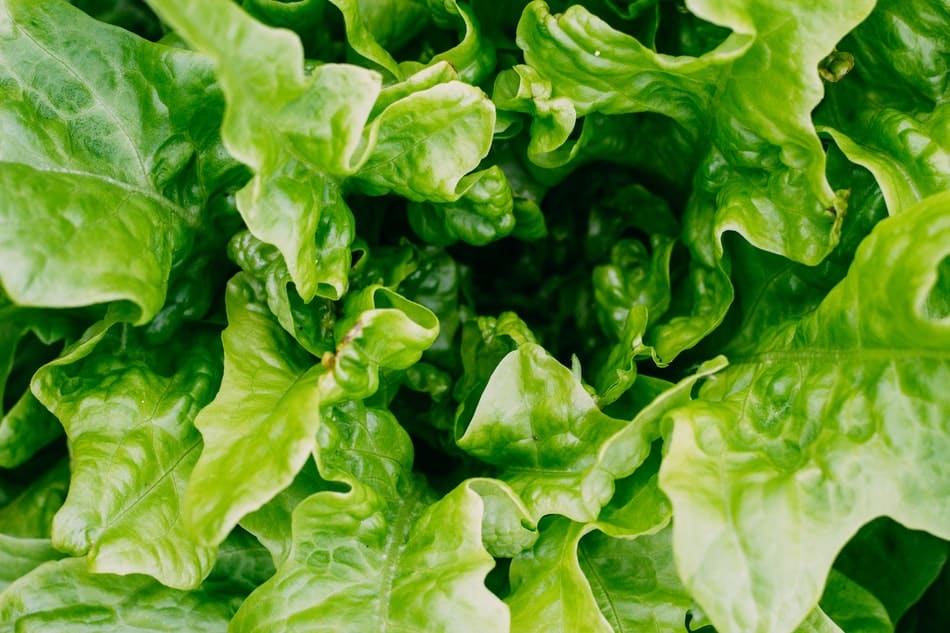Do you like lettuce? If so, you’ll love learning how to grow hydroponic lettuce! It’s a great way to get delicious, healthy lettuce without having to go to the grocery store. In this article, I will discuss the basics of growing hydroponic lettuce. I will cover everything from watering and fertilizing your plants.
To get started growing hydroponic lettuce, you will need to purchase a hydroponic system. you have your system set up, plant your lettuce seeds in the system and allow them to germinate.
The Benefits Of Using Hydroponics System To Grow Lettuce
If you are looking for a more efficient and sustainable way to grow lettuce, then consider using hydroponics. Hydroponics is a method of growing plants in water without soil. This type of system can provide numerous benefits, especially when it comes to growing lettuce.

Here are some of the top benefits of using hydroponics to grow lettuce:
Hydroponics systems use less water than traditional methods. Studies have shown that hydroponic systems can use up to 90% less water than traditional methods. This is because the roots of the plants are constantly submerged in water, which means there is little evaporation or runoff. As a result, this type of system is much more drought-tolerant.
Hydroponics systems are also more efficient in terms of nutrient uptake. This is because the roots of the plants are directly exposed to the nutrient solution, which means they can absorb nutrients more quickly and efficiently. In traditional methods, a lot of the nutrients are lost to leaching and runoff.
Hydroponics systems allow you to control the environment in which your plants are grown. This means you can optimize conditions for growth, such as temperature, humidity, light, and CO₂ levels. As a result, you can achieve much higher yields than with traditional methods.
Hydroponics systems are less labor-intensive than traditional methods. This is because there is no need to till soil or weed gardens. Additionally, hydroponics systems can be automated to some extent, which further reduces the amount of labor required.
Hydroponics systems are relatively easy to set up and maintain. There are many different types of hydroponic systems available on the market, so you can find one that fits your needs and budget. Plus, once you have a system up and running, it is relatively easy to maintain.
As you can see, there are many benefits to using hydroponics to grow lettuce. If you are looking for a more efficient and sustainable way to grow this leafy green, then consider using hydroponics. You may be surprised by just how much easier and more successful it is than traditional methods.
There are several things to consider when deciding whether or not to use hydroponics to grow lettuce. The benefits listed above are just a few of the reasons why this type of system may be right for you. With proper planning and execution, you can set up a successful hydroponics system that will provide you with an abundance of fresh, delicious lettuce.

How To Grow Hydroponic Lettuce
To ensure your lettuce grows healthy and strong, follow these simple steps:
- First, you’ll need to find a location that gets plenty of sunlight. Lettuce needs at least six hours of sunlight per day, so a south-facing window is ideal. If you don’t have a south-facing window, you can also grow lettuce under grow lights.
- Next, you’ll need to fill your pots or container with a hydroponic growing medium. There are many different types of hydroponic growing media available, but we recommend using coco coir. Coco coir is made from coconut husks and is an excellent growing medium for lettuce.
- Once you’ve filled your pots with coco coir, it’s time to plant your lettuce seeds. You can either direct sow the seeds into the coco coir or start them in seed trays first and then transplant them later.
- Once your lettuce seeds have germinated, you’ll need to water them regularly. Lettuce plants prefer a slightly acidic pH level between five and six, so be sure to use an acidic fertilizer when watering your plants.
- Finally, you’ll need to harvest your lettuce when it’s ready. Lettuce is typically ready to harvest in about 30 days. To tell if your lettuce is ready, simply check the leaves. If they’re crisp and green, then they’re ready to eat!
How To Fertilize Hydroponic Lettuce
There are a few things to consider when fertilizing hydroponic lettuce. The first is the type of fertilizer you will use. There are many different types of fertilizer available, so it is important to choose one that is specifically designed for hydroponics. Another thing to consider is the concentration of the fertilizer. It is important to follow the manufacturer’s instructions carefully so that you do not over or under-fertilize your plants.
If you are using a liquid fertilizer, you will need to add it to your reservoir according to the manufacturer’s directions. If you are using a solid fertilizer, you will need to dissolve it in water before adding it to your reservoir. Once you have added the fertilizer to your reservoir, make sure that you mix it thoroughly so that the plants will be able to get an even supply of nutrients.
Now that you know how to fertilize hydroponic lettuce, you can experiment with different types and concentrations of fertilizer to find what works best for your plants. Just remember to always follow the manufacturer’s instructions carefully so that you do not damage your plants. With a little bit of trial and error, you should be able to find the perfect fertilizer for your hydroponic lettuce crop.
Final Words
What’s the bottom line? The best way to grow hydroponic lettuce is by starting with quality seed, providing it with plenty of oxygen and water, and keeping it at a temperature between 60-70 degrees Fahrenheit. By following these simple tips, you’ll be on your way to harvesting delicious, healthy lettuce in no time!
So what are you waiting for? Get started today and see for yourself how easy and rewarding it can be to grow hydroponic lettuce. You might just be surprised at how much you enjoy it!
Popular Articles

